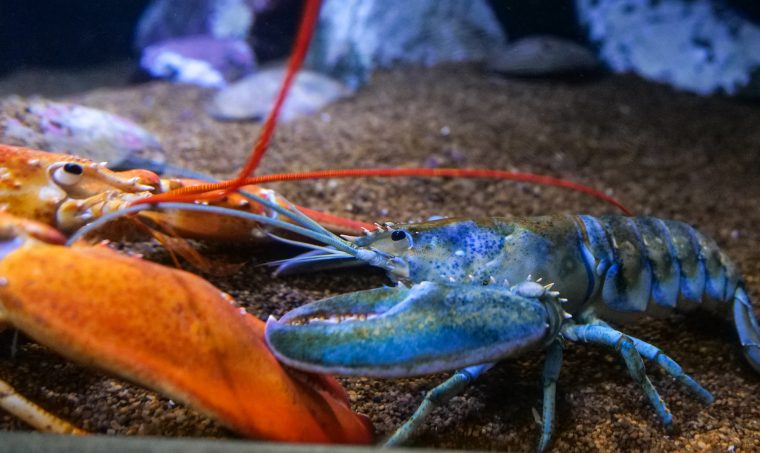
BOSTON, MASS. (February 13, 2020) – The New England Aquarium recently received a rare blue lobster – found in the wild in about one in two million lobsters – from Patriot Seafoods in Salem and Marblehead. After a 30-day quarantine to ensure its good health, the lobster will now be on view in the Aquarium’s Isle of Shoals exhibit in time for the upcoming February school vacation weeks.
The Aquarium has received several rare-colored lobsters from fishermen and retail outlets over the years including a yellow and a calico lobster, both occurring naturally in about one in 30 million lobsters, and an orange lobster, which occurs in about one in 20 million lobsters. There is also the highly rare half black-half orange “Halloween” colored lobster which occurs in the wild at an incidence of in 1 in 50 million. These interesting and curious animals are on display in the Aquarium, and visitors often marvel at their unusual coloring since they are more accustomed to seeing lobsters in their natural state of brown before turning red once cooked.
The Aquarium has other exhibits that explain the developmental stages of lobster as well as a decades-long running research facility behind the scenes that hatches, raises, and studies American lobsters. One area of study is lobster shell disease which causes lesions and discoloring of the lobster shell but is not harmful to humans if eaten, just unsightly. Scientists generally believe that shell disease is caused by bacteria in the environment, and it is happening more frequently as the Gulf of Maine water temperatures rise faster than many of the world’s oceans.
Anita Kim, an assistant scientist and laboratory operations manager for the Aquarium’s Anderson Cabot Center for Ocean Life, has done research on treating the disease and is currently looking at the distribution of female lobsters and larvae amid temperature and climate change effects. The Aquarium’s Lobster Lab researchers have also studied lobster nutrition, brain development, shell colors, and reproduction.
PHOTO/VIDEO LINKS and CAPTIONS:
MEDIA CONTACTS:
Pamela Bechtold Snyder, 617-973-5213; psnyder@neaq.org
Diana Brown McCloy, 978-697-9414; Diana@teakmedia.com
